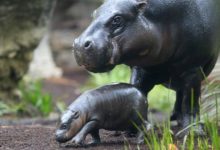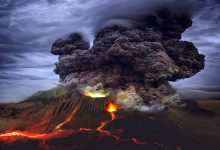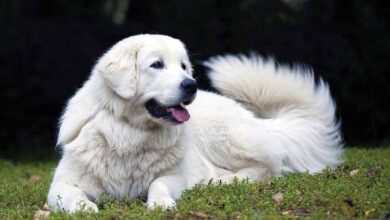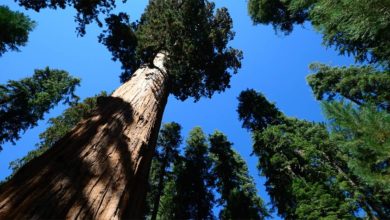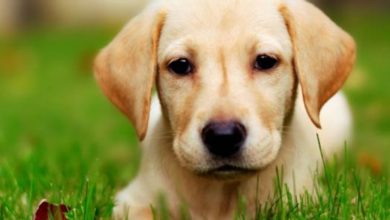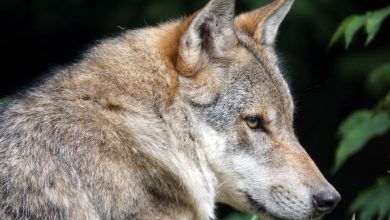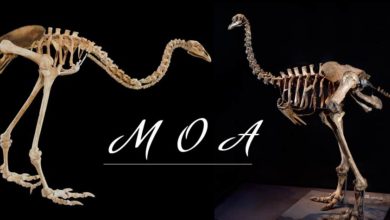How Do Animals Sleep?
Have you ever wondered how fish sleep? How is it possible that aquatic mammals don’t drown during a nap? The world of animal sleep is far more diverse and mysterious than our own. Sleep is a fundamental biological necessity, yet its expression varies wildly across life on Earth. This article will explore how similar our sleep is to that of animals. We will try to describe certain phenomena and explain their purpose. We’ll explore the unique adaptations and physiological processes that govern their periods of rest, shedding light on the vital role sleep plays in their survival and well-being.
What is Sleep?
From a physiological perspective, sleep is a reversible state of unconsciousness characterized by changes in brain waves, loss of muscle tone (though not in all animals), and regular periods of rapid eye movement (REM phase). Behaviorally, sleep is defined as a lack of response to external stimuli, during which an animal assumes a specific place and posture. The physiological definition is generally applied to the sleep of birds and mammals; for creatures with simpler brain structures, the behavioral definition predominates.

How Do Animals Sleep?
How Do Reptiles Sleep?
Based on EEG (electroencephalogram) readings, it’s been observed that reptile sleep differs from that of other animals. A reptile deprived of sleep for an extended period will sleep longer and require stronger stimuli to wake up. This could indicate the presence of what’s known as compensatory sleep, which isn’t necessarily longer but rather deeper than normal sleep. The purpose of this is to make up for the time the reptile was deprived of its well-deserved rest.
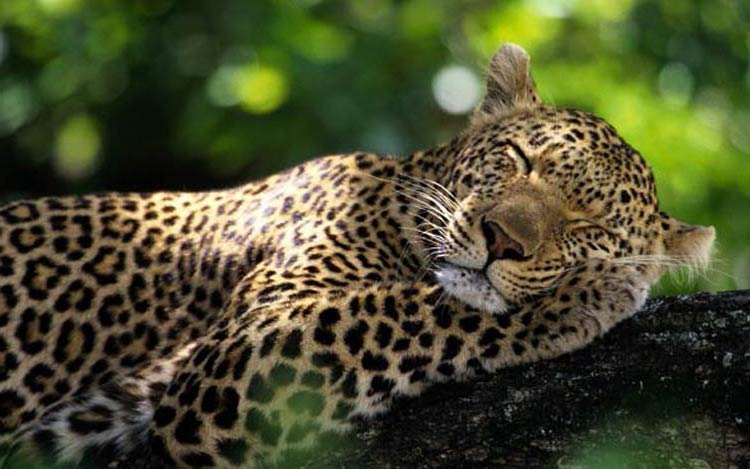
How Do Terrestrial Mammals Sleep?
Some bats dedicate 18-20 hours a day to sleep, but giraffes or elephants need only 3-4 hours of napping daily. Significant differences in sleep duration are also visible between closely related species and between animals studied in laboratories versus their natural environments.
How Much Do Sloths Sleep?
Sloths are a good example here: in 1983, scientists showed that they slept approximately 16 hours a day. However, in 2008, thanks to miniature sensors placed on wild individuals, it was determined that sloths spend less than 10 hours sleeping.
Carnivores, Herbivores, and Omnivores
Dietary habits certainly influence sleep duration; predators require the most rest, while herbivores need the least. Omnivores sleep slightly less than carnivores but longer than herbivores. In herbivorous animals, nap duration depends on body mass; large mammals sleep for shorter periods than smaller representatives of the class.
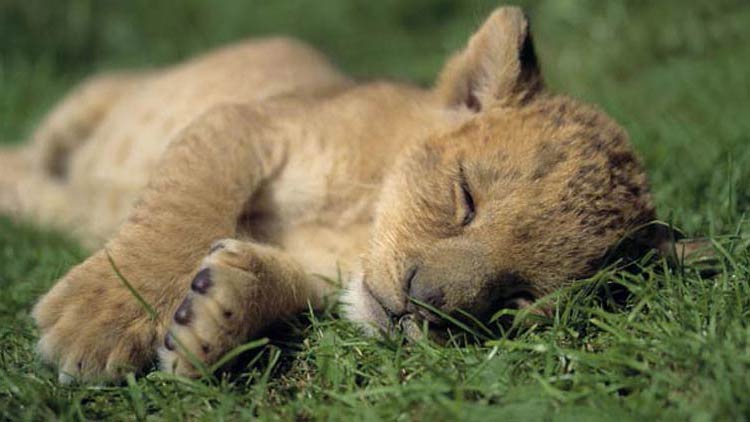
Within the mammal class, there are so-called sleep phases:
- REM sleep / paradoxical sleep (Rapid Eye Movement – the phase of rapid eye movements)
- NREM sleep / SWS (Slow-Wave Sleep) (Non-rapid Eye Movement – the phase of slow eye movements).
The duration of each phase is influenced by the animal’s size; large and medium-sized species have longer sleep cycles. The amount of sleep needed is also related to their basal metabolic rate and brain mass. Furthermore, mammals born physically developed (e.g., horses, giraffes) have a shorter REM phase than animals that are less developed at birth (dogs, cats). It also appears that the REM phase lasts longer in newborn mammals than in adults.
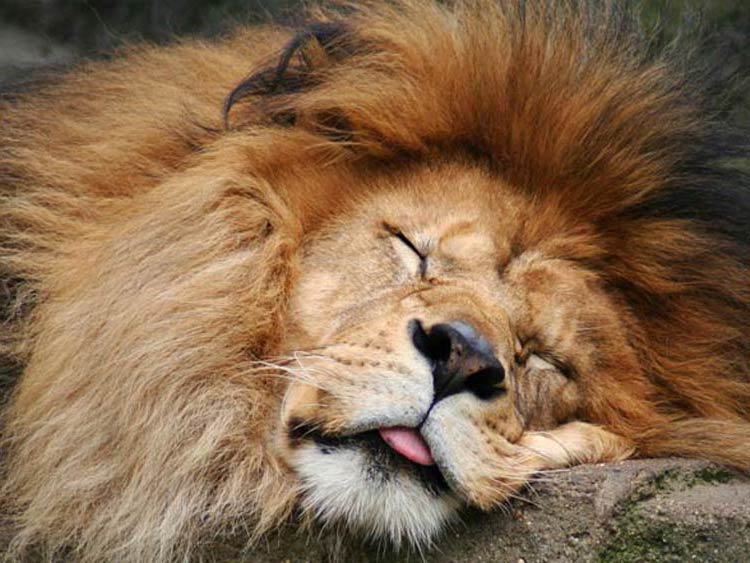
How Do Marine Mammals Sleep?
How Do Whales Sleep?
Pinnipeds (such as seals and sea lions) and whales exhibit what’s called unihemispheric slow-wave sleep (USWS). This means that the animal sleeps with only one half of its brain, while the other half remains awake. Consequently, the mammal can rest motionless on one side while simultaneously staying afloat and breathing freely.
How Do Fur Seals Sleep?
In fur seals (Arctocephalus spp.) sleeping in water, the REM (Rapid Eye Movement) phase is practically absent. However, when they move onto land, this phase returns, likely due to bihemispheric sleep (sleep involving both brain hemispheres).
The REM phase does not occur in fur seals sleeping underwater, which regularly wake up and surface to breathe. Yet, individuals sleeping on the water’s surface do experience paradoxical sleep.
How Do Cetaceans Sleep?
REM (Rapid Eye Movement) sleep has also been detected in pilot whales (Globicephala spp.) – cetaceans belonging to the oceanic dolphin family. However, it is generally believed that cetaceans as a whole do not experience a REM phase, and this is not associated with any health problems.
So why can’t aquatic mammals enter paradoxical sleep? This is likely because skeletal muscles relax during this state, making it incredibly difficult to maintain regular breathing.

Daily Sleep Duration in Selected Captive Mammals*
Here’s a list of the average daily sleep duration for selected mammals living in captivity:
- Horses (Equus caballus) – 2.9 hours
- Donkeys (Equus asinus asinus) – 3.1 hours
- African Elephants (Loxodonta africana) – 3.3 hours
- Sheep (Ovis aries) – 3.8 hours
- Asian elephant (Elephas maximus) – 3.9 hours
- Cows (Bos taurus) – 4 hours
- Giraffes (Giraffa camelopardalis) – 4.5 hours
- Humans (Homo sapiens) – 8 hours
- Rabbits (Oryctolagus cuniculus domesticus) – 8.4 hours
- Guinea pigs (Cavia porcellus) – 9.4 hours
- Chimpanzees (Pan troglodytes) – 9.7 hours
- Red Foxes (Vulpes vulpes) – 9.8 hours
- Dogs (Canis familiaris) – 10.1 hours
- Ducks (Anas platyrhynchos domesticus) – 10.8 hours
- Jaguars (Panthera onca) – 10.8 hours
- Cheetahs (Acinonyx jubatus) – 12.1 hours
- House mouse (Mus musculus) – 12.5 hours
- Cats (Felis catus) – 12.5 hours
- Rats (Rattus norvegicus) – 12.6 hours
- Lions (Panthera leo) – 13.5 hours
- Platypuses (Ornithorhynchus anatinus) – 14 hours
- Syrian hamsters (Mesocricetus auratus) – 14.3 hours
- Squirrels (Sciurus carolinensis) – 15 hours
- Tigers (Panthera tigris) – 15.8 hours
- Pythons (Pythonidae family) – 18 hours
- Opossums (Didelphis virginiana) – 18 hours
- Giant armadillos (Priodontes maximus) – over 18.1 hours
- Greater mouse-eared bats (Myotis myotis) – 19.9 hours
*Of course, this “captivity” context does not apply to humans 🙂
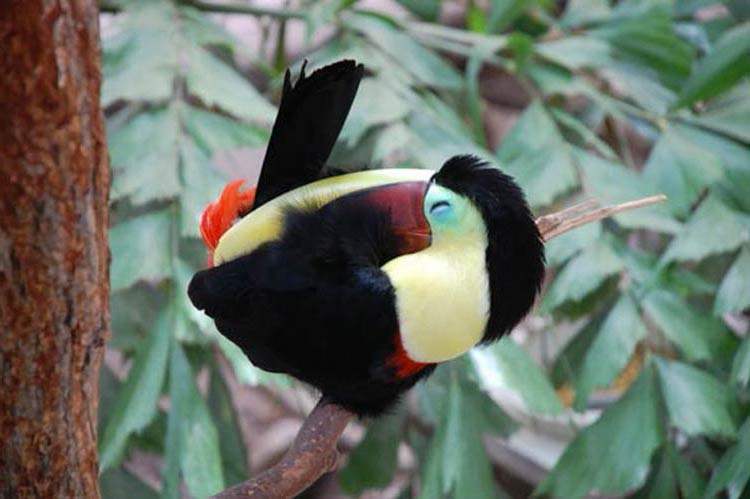
How Do Birds Sleep?
Avian sleep is very similar to mammalian sleep. Both classes exhibit REM (Rapid Eye Movement) and NREM (Non-rapid Eye Movement) phases. This similarity might be linked to their homeothermic (warm-blooded) nature. However, it turns out that slow-wave sleep (SWS) – the deepest stage of NREM – is significantly more profound and intense in birds than in mammals.
The duration of sleep depends on the species and factors like their environment. It appears that individuals more vulnerable to predator attacks sleep for shorter periods than species inhabiting safer areas.
Bihemispheric and Unihemispheric Sleep
Similar to mammals, there’s also a division between species that sleep bihemispherically (with both brain hemispheres) and unihemispherically (Unihemispheric Slow-Wave Sleep, USWS).

One Eye Open…
In this second form of sleep, the bird closes the eye opposite to the sleeping hemisphere. So, if the right hemisphere is asleep, the left eye closes, and vice-versa.
USWS (Unihemispheric Slow-Wave Sleep) occurs more frequently in ducks (Anas platyrhynchos domesticus) on the periphery of a flock (i.e., closer to the edge). This likely enables them to more easily detect predators and warn the rest of the group, as the open eye quickly reacts to changes in the environment.
Can Birds Sleep During Flight?
For migratory birds, the situation is less clear. The biggest debate in the scientific community stems from doubts about whether traveling species can sleep in flight. Theoretically, some sleep phases and types could occur during flight, but technical limitations prevent the recording of brain wave activity in birds during their aerial journeys.
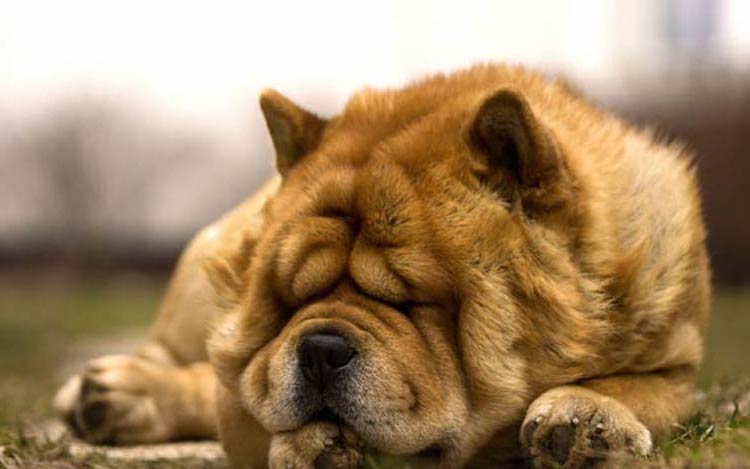
How Do Fish Sleep?
The sleep of fish has not been thoroughly studied. It’s only suspected that some schooling species or those that swim continuously (due to the constant need for gill ventilation) may not sleep at all. Similar suspicions are directed toward blind cave-dwelling species. Many representatives of this group, such as the tench (Tinca tinca), zebrafish (Danio rerio), and tilapia (Cichlidae family), become motionless in the water when sleeping. A sleeping red hogfish (Lachnolaimus maximus) can even float up to the surface.
Observations from the 1960s on approximately 200 species of aquarium fish in European public aquariums indicated that the vast majority of species do fall asleep. However, individuals sleeping during the day are more easily awakened. During periods of migration, spawning, or parental care, this physiological need sometimes disappears.
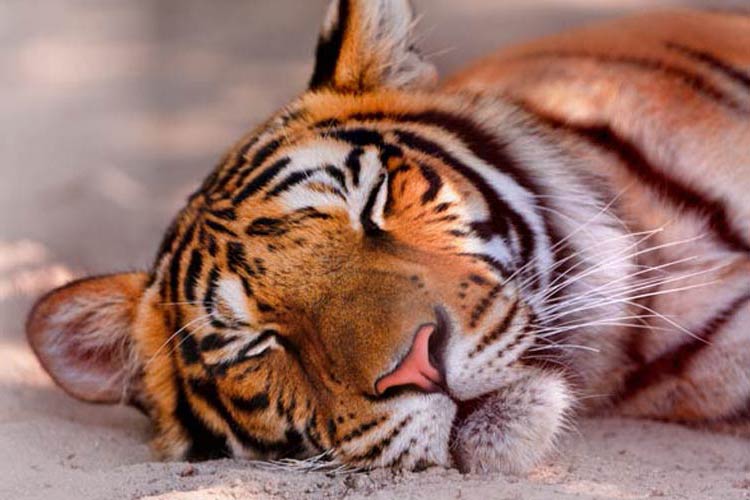
Invertebrate Sleep
Even a creature as primitive as a nematode (Nematoda phylum) enters a sleep-like state. It has been observed that a characteristic period of inactivity, possessing features of primitive sleep, precedes each molt. Recent research even suggests sleep-like behaviors in creatures as simple as jellyfish (Medusozoa subphylum).
Studies on fruit flies (Drosophila melanogaster) have shown that they also sleep, and a lack of sleep results in cognitive impairment (information processing difficulties).
But how were the cognitive functions of these small, agile insects studied? The flies were given a choice: they could fly through a tunnel leading to a light source or through a dark tunnel.
“Well-rested” flies flew towards the light, unless there was a cube of sugar in the dark tunnel and something repellent in the lighted one. Sleep-deprived individuals took longer to process environmental information and also forgot learned information more quickly.
The result of invertebrate sleep research is the conclusion that this bodily state is essential for important changes to occur in the nervous system.
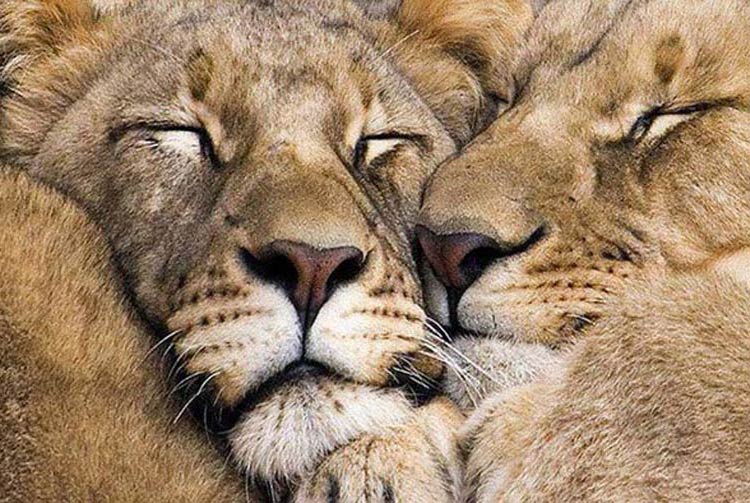
The Evolutionary Riddle
Why Do Animals Sleep?
Despite extensive research, the exact evolutionary purpose of sleep remains one of biology’s most fascinating mysteries. However, scientists propose several compelling hypotheses. Sleep is believed to play a crucial role in energy conservation, allowing organisms to reduce their metabolic rate during periods of inactivity. It’s also vital for restoration and repair, giving the body a chance to recover from the day’s wear and tear, including muscle and tissue repair.
Critically, sleep is indispensable for brain function, facilitating processes like memory consolidation (transferring short-term memories to long-term storage) and synaptic plasticity (strengthening or weakening connections between neurons, essential for learning). For many species, sleep also serves as a period of safety from predators during times when they are less effective at foraging or navigating in low light. These diverse benefits highlight why sleep, in various forms, is almost universally observed across the animal kingdom.
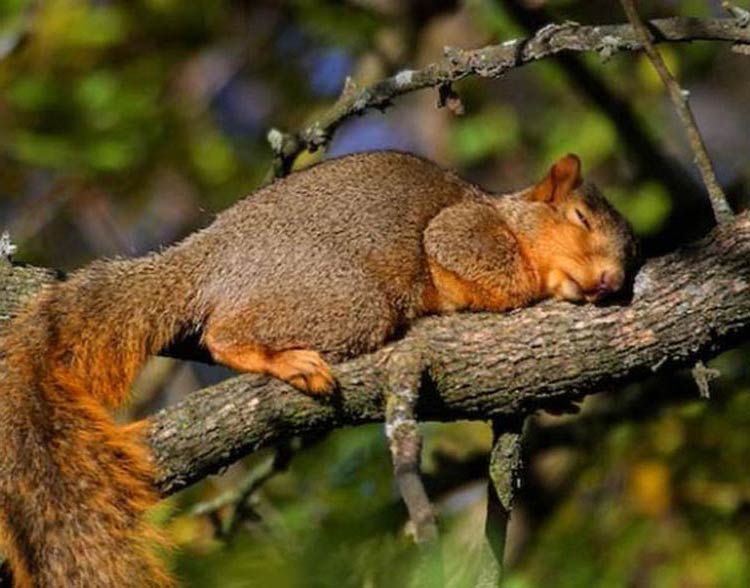
Winter and Summer Sleep
You can find an extended discussion on this topic in our article: Winter and Summer Sleep, where we explain hibernation, torpor, estivation, and many other related concepts.
Animal Sleep – Interesting Facts
- EEG (electroencephalogram) studies have determined that monotremes (Monotremata order) can experience the REM (Rapid Eye Movement) phase of sleep.
- Animals during hibernation are not in a state of sleep, but rather lethargy. Hibernation significantly reduces the need for sleep, but it does not eliminate it. Sometimes, an animal will emerge from hibernation several times during the winter to engage in regular sleep.
- The existence of unihemispheric slow-wave sleep (USWS) is used as an argument for the necessity of sleep. It also appears that no animal on Earth is entirely without the ability to fall asleep.
- Some birds (e.g., ducks (Anas platyrhynchos domesticus)) sleep with one eye open and the other closed.



